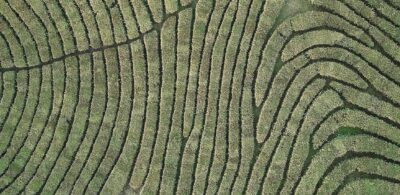Breaking down biodiversity banking: part one
08 March 2021
In this four-part series, Corrs’ Environment and Planning team examines biodiversity banking across Australia, its role in environmental assessment processes at state and federal levels and the different transaction structures for buying and selling biodiversity credits.
In part one we go back to basics of biodiversity banking (or biobanking) examining:
- biodiversity credits;
- how biobanking can affect conditions of development consent; and
- its potential as an investment opportunity.
Back to the basics of biodiversity banking
Biodiversity banking (also known as biobanking) is a conservation and land management scheme in which biodiversity is measured and commodified. Land is assessed as having a particular range of biodiversity values and landowners who commit to protecting those biodiversity values can then generate biodiversity credits. Developers (including government agencies) buy these biodiversity credits to offset the negative environmental impacts of their development.
The nature of biodiversity banking schemes in general differs from jurisdiction to jurisdiction. For example, NSW and Victoria have formal biodiversity banking schemes, whereas Queensland does not have a formal biobanking credit system but developers can still be required to offset the environmental impacts of their development.
Certainly, the purpose of all biobanking schemes is to offset negative environmental impacts associated with development by requiring specific conservation and land management actions on other land to ensure the protection of biodiversity.
Biodiversity credits
In order to generate biodiversity credits, landowners undertake an assessment which measures the biodiversity values of land. Landowners who make a commitment to undertake specific, measurable conservation and environmental management actions (such as the removal of weeds and pests and installing signage to deter rubbish dumping), which protect those biodiversity values, can then enter into a formal conservation agreement to generate biodiversity credits.
Biobanking and conditions of development consent
Once generated, biodiversity credits can then be sold to developers to offset the negative environmental impacts of their development. The need to purchase biodiversity credits to offset the negative environmental impacts of a development is often a condition of development consent. The condition of consent may require the development to acquire a specific number and type of biodiversity credit to offset the specific impacts of that development.
The more specific the classes of credits available under a given system are the more targeted conditions of approval requiring retirement of biodiversity credits can be, ensuring that the benefit derived from the retirement of the credit is commensurate with the environmental impact of the development.
For example, a development which negatively impacts koala habitat may require the developer to obtain biodiversity credits relating to koalas or their habitat or both. This ensures the development’s impact on the koala is entirely offset by the protection of the species elsewhere.
Biodiversity credits are ‘single use’, and a developer must acquire new credits every time it has to satisfy such a condition of development consent. The same credits cannot simply be applied to multiple developments in perpetuity.
An investment opportunity?
While biobanking schemes are predominately thought of as a system under which developers can offset impact on the environment arising from their development, the monetary value associated with biodiversity credits makes them an attractive option for investors.
Biodiversity credits do not have a set trade price. They can be bought and sold similar to any other commodity and are subject to the same market effects on their value. Certain credits are in short supply and high demand, driving up their unit price to the tens of thousands of dollars.
Investors can generate biodiversity credits from their own land (i.e. ‘banking”’ their land) or help others generate biodiversity credits from their land to sell to developers. Biodiversity credits can also be strategically purchased in view of future developments and the likely future need for biodiversity credits.
Part two of this biobanking series will explore the different schemes across Australia. Parts three and four will then consider some key matters which should be kept in mind when buying and selling biodiversity credits.
Authors

Head of Environment and Planning

Partner

Senior Associate
Tags
This publication is introductory in nature. Its content is current at the date of publication. It does not constitute legal advice and should not be relied upon as such. You should always obtain legal advice based on your specific circumstances before taking any action relating to matters covered by this publication. Some information may have been obtained from external sources, and we cannot guarantee the accuracy or currency of any such information.
Key Contact
Head of Environment and Planning



